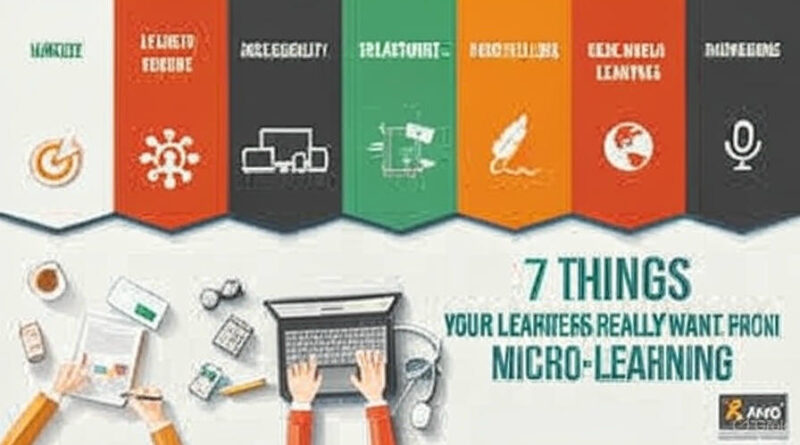Micro-Learning—Why Small Chunks of Knowledge Are Changing the Game
Ever feel like you just don’t have the time or mental energy for hour-long training sessions or dense textbooks? You’re not alone. Our lives are jam-packed, our minds pulled in a dozen directions—and the old-school ways of learning just don’t cut it anymore. That’s where micro-learning swoops in like a breath of fresh air. Short. Focused. Immediately useful.
So what is micro-learning, really?
It’s exactly what it sounds like: small, bite-sized lessons designed to be consumed quickly and remembered easily. Whether it’s a 3-minute video, a quick quiz, or a few interactive flashcards, this learning style thrives on efficiency and adaptability. It’s built for how we scroll, swipe, and sprint through our days.

The Perfect Match for Modern Life
Let’s be honest. We’re all multitasking. We’re learning while cooking, while commuting, while taking five-minute breaks between Zoom calls. Micro-learning slips into those gaps like it was made for them—which, frankly, it was.
And with mobile devices practically glued to our hands, it’s no surprise this trend exploded. Education doesn’t have to be a sit-down event anymore. It can be a habit. A ritual. Something you weave into your routine like checking emails or brushing your teeth.
Why Now?
A few things triggered this shift:
- Tech’s in our pockets: Phones, tablets, smartwatches. We’re plugged in 24/7.
- Jobs are evolving faster: We’ve got to keep up, fast. Micro-learning helps us stay current without taking days off.
- Brain science backs it up: Small lessons repeated over time—known as spaced repetition—improve retention. Our minds love it.
- The pandemic made us remote: That pushed flexible, remote-friendly learning to the forefront—and it’s not going back.
The Power in the Small Stuff
Don’t mistake brevity for lack of power. Here’s why micro-learning packs a punch:
- Higher retention: Small amounts of info are easier to absorb. Think of it like sipping instead of chugging—your brain handles it better.
- Accessible anywhere: Learn during lunch, in line at the grocery store, or even during your Uber ride.
- Budget-friendly: For companies, it’s cheaper to produce and update. No need to overhaul the whole system—just swap out one piece.
- People actually finish it: Engagement rates go up when lessons are short. Makes sense, right? It’s easier to commit to three minutes than an hour.
Who’s Jumping Onboard?
This isn’t just for students or tech geeks. Tons of industries are riding the micro-learning wave:
- Companies: For onboarding, compliance, upskilling. They get faster, more consistent results.
- Healthcare: Protocols shift constantly—micro-learning keeps professionals current.
- Education: Teachers use it to reinforce concepts or prep for tests.
- Freelancers and creators: From learning a new design tool to mastering content strategy—it’s perfect for the self-taught crowd.
Not Without Flaws
Of course, it’s not all sunshine and progress bars. Micro-learning has some blind spots:
- Too shallow? Sometimes, yes. Complex ideas need space and time.
- Disorganized: Without structure, bite-sized bits can feel scattered.
- Lack of feedback: No face-to-face interaction means limited coaching or discussion.
Making Micro-Learning Work for You
Want to use micro-learning well? Here’s how:
- Don’t ditch deep learning: Use micro-lessons to support—not replace—longer sessions.
- Create pathways: Structure content so every small lesson connects to a bigger goal.
- Engage, don’t just deliver: Add questions, reflections, or games. Passive learning doesn’t stick.
- Personalize it: Let learners choose what matters to them. Relevance = motivation.
Where’s This Headed?
We’re just scratching the surface. Micro-learning is becoming more sophisticated, thanks to AI, machine learning, and user data. Expect personalized lesson plans that adapt in real time, based on what you’ve mastered—or struggled with.
Attention is today’s most limited resource. The education world’s finally catching up to that truth. And with micro-learning, we’re not just fitting education into our lives—we’re making it work with our lives.
So whether you’re looking to grow your career, pick up a hobby, or just satisfy your curiosity one mini-lesson at a time—this could be the smartest (and easiest) way to do it.




